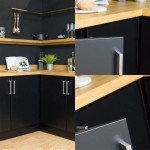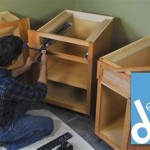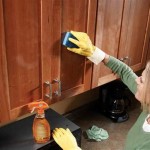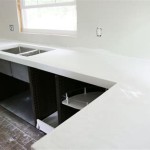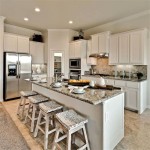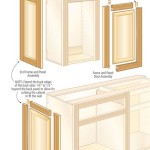Kitchen Cabinet Door Handles With Backplate: A Comprehensive Guide
Kitchen cabinet door handles with backplates represent a significant element in kitchen design, blending functionality with aesthetic appeal. These handles, comprised of a handle or pull affixed to a decorative or protective backplate, offer several advantages over handle-only options. Understanding the various styles, materials, and installation considerations is crucial for homeowners and designers aiming to enhance the visual character and longevity of kitchen cabinetry.
The backplate serves as more than just a decorative flourish. It adds a layer of protection to the cabinet door's surface, shielding it from scratches, fingerprints, and wear around the handle, which is a high-traffic area. This is particularly beneficial in kitchens with painted or delicate cabinet finishes. Furthermore, backplates can conceal existing imperfections or screw holes from previous hardware, providing a clean and refined appearance. They also contribute to the overall visual weight and balance of the cabinet, influencing the perceived style from contemporary to traditional.
Key Considerations When Selecting Kitchen Cabinet Door Handles with Backplates
Choosing the right kitchen cabinet door handles with backplates requires careful consideration of several factors, ensuring they complement the existing design and meet the user's practical needs. This involves assessing cabinet style, material choices, size variations, and installation requirements.
Cabinet Style and Design
The architectural style of the kitchen cabinets dictates the appropriate type of handle and backplate. For instance, traditional kitchens often benefit from ornate, antique-inspired designs crafted from materials like brass or bronze. These designs typically feature intricate details on both the handle and backplate, reinforcing a classic aesthetic. Common traditional styles include Victorian, Georgian, and French Country, each with distinct characteristics that should be reflected in the hardware.
In contrast, contemporary kitchens generally favor sleek, minimalist designs with clean lines. Stainless steel or brushed nickel handles with simple rectangular or square backplates are prevalent in modern spaces. These options prioritize functionality and understated elegance, blending seamlessly with the overall streamlined appearance. Modern styles often incorporate geometric shapes and avoid excessive ornamentation.
Transitional kitchens, which blend elements of traditional and modern design, offer more flexibility. They can accommodate a wider range of handle and backplate styles, allowing for a personalized touch. A popular choice for transitional kitchens is a cup pull with a subtle backplate or a bar pull with a slightly curved backplate, providing a balance between classic and contemporary aesthetics. The key is to select hardware that complements the overall design without overpowering it.
Material Selection and Durability
The material of the handle and backplate significantly impacts its durability and aesthetic appeal. Common materials include brass, bronze, stainless steel, nickel, and zinc. Brass and bronze are often used in traditional kitchens due to their rich color and timeless appeal. They can be polished to a high shine or aged to create an antique look. Brass is susceptible to tarnishing but can be treated with protective coatings.
Stainless steel is a popular choice for modern kitchens due to its durability, corrosion resistance, and clean appearance. It is also relatively easy to maintain and can withstand the rigors of daily use. Brushed nickel offers a similar aesthetic to stainless steel but with a warmer tone and less reflective surface. It is also highly durable and resistant to tarnishing.
Zinc is a cost-effective option that can be plated with various finishes to mimic the appearance of more expensive materials. However, it is generally less durable than brass, bronze, or stainless steel. The chosen material should be resistant to moisture, cleaning agents, and everyday wear and tear. Considering the kitchen environment, prioritizing materials that offer longevity and ease of maintenance is crucial.
Size, Spacing, and Ergonomics
The size and spacing of the handles and backplates should be proportional to the size of the cabinet doors and drawers. Small cabinets typically require smaller handles and backplates, while larger cabinets can accommodate larger hardware. The overall effect should be visually balanced and harmonious. A general guideline is to select handles that are approximately one-third the length of the drawer or door.
Ergonomics is another important factor to consider. The handles should be comfortable to grip and easy to use. The backplate should be positioned to provide adequate hand clearance, preventing knuckles from hitting the cabinet door. It is advisable to test different handle styles and sizes to determine the most comfortable option for the user. Consider the needs of all household members, including those with limited mobility or dexterity.
Installation and Maintenance of Kitchen Cabinet Door Handles with Backplates
Proper installation and regular maintenance are essential for ensuring the longevity and optimal performance of kitchen cabinet door handles with backplates. Careful attention to detail during installation prevents damage to the cabinets, while routine cleaning and upkeep preserve the hardware's appearance and functionality.
Precise Installation Techniques
Accurate measurements are paramount for successful installation. Before drilling any holes, carefully measure and mark the desired location for the handle and backplate on each cabinet door and drawer. Use a template or drilling guide to ensure consistent placement and alignment. Improper measurements can lead to misaligned hardware and damage to the cabinet surface.
When drilling holes, use the correct drill bit size to avoid stripping the screws or cracking the cabinet doors. Consider using a pilot hole slightly smaller than the screw diameter to facilitate easier installation and prevent splitting. Apply gentle, even pressure when drilling to ensure clean, precise holes.
Securely attach the handle and backplate using the appropriate screws. Avoid overtightening the screws, as this can damage the cabinet door or strip the threads. If necessary, use washers to provide a more secure and even distribution of pressure. Inspect the installation to ensure that the handles and backplates are firmly attached and properly aligned. Any looseness should be addressed immediately to prevent further damage.
Cleaning and Maintenance Protocols
Regular cleaning is essential for maintaining the appearance and functionality of kitchen cabinet door handles with backplates. Use a soft, damp cloth to wipe away dirt, dust, and fingerprints. Avoid using abrasive cleaners or scouring pads, as these can scratch or damage the finish. For stubborn stains, use a mild detergent diluted in water.
For brass or bronze hardware, use a specialized metal cleaner and polish to remove tarnish and restore shine. Follow the manufacturer's instructions carefully to avoid damaging the finish. For stainless steel hardware, use a stainless steel cleaner to remove fingerprints and water spots. Wipe the hardware dry with a soft cloth to prevent streaks.
Periodically inspect the handles and backplates for any signs of looseness or damage. Tighten any loose screws and replace any damaged hardware promptly. Lubricate the moving parts of the handles with a silicone-based lubricant to prevent sticking or squeaking. Proper maintenance ensures that the hardware remains in optimal condition for years to come.
Styles and Trends in Kitchen Cabinet Door Handles with Backplates
The design of kitchen cabinet door handles with backplates evolves along with broader design trends, influencing the aesthetic of the entire kitchen. Staying abreast of these trends allows homeowners to create a stylish and contemporary space. From minimalist modern to ornate traditional, current trends cater to diverse tastes.
Modern Minimalism
The trend towards minimalism in kitchen design has led to the popularity of sleek, handleless cabinets. However, for those who prefer handles, options with minimal backplates are a common solution. These handles typically feature a simple bar or a small knob with a sleek, understated backplate made from stainless steel, brushed nickel, or matte black. The emphasis is on clean lines and functionality, with minimal ornamentation. The backplates are often rectangular or square, complementing the geometric shapes prevalent in modern design.
Integrated pull handles, where the handle is seamlessly integrated into the backplate, are another popular choice for minimalist kitchens. These designs further reduce visual clutter and create a clean, streamlined look. Finishes are often monochromatic, blending with the cabinet color to maintain a cohesive and unified aesthetic.
Industrial Chic
The industrial chic style, characterized by raw materials and exposed elements, has also influenced kitchen hardware design. Cabinet door handles with backplates in this style often feature rugged, utilitarian designs made from materials like black iron, weathered steel, or reclaimed wood. The backplates tend to be larger and more substantial, adding a sense of weight and solidity to the cabinets.
Exposed screw heads and visible rivets are common details in industrial-style hardware, adding to the raw, unfinished look. Finishes are often matte or distressed, enhancing the rustic aesthetic. These handles and backplates are typically paired with concrete countertops, exposed brick walls, and stainless steel appliances to create a cohesive industrial-inspired space.
Vintage Revival
The vintage revival trend celebrates the charm and character of bygone eras. Kitchen cabinet door handles with backplates in this style often feature ornate details, antique finishes, and classic shapes. Popular choices include cup pulls with decorative backplates, knob handles with floral or geometric patterns, and bail pulls with intricate scrollwork.
Materials like antique brass, oil-rubbed bronze, and polished nickel are commonly used in vintage-inspired hardware. The backplates often feature embossed designs, raised patterns, or decorative inlays. These handles and backplates are typically paired with painted cabinets, vintage-inspired appliances, and retro-style accessories to create a nostalgic and inviting kitchen.

Diy Kitchen Cabinets Makeover Cabinet Door Handles

Manor Handle Backplate Gold

Silver Chrome Dresser Knob Back Plate Plates Drawer Knobs

Cabinet Knobs Buster And Punch Knurled Furniture Knob On

Manor Handle Backplate Gold

Brass Leather Bar Handles Free Delivery Pushka Home

Hexagonal Brass Cupboard Bar Handle With Back Plate Satin Ho Se Home

Brass Drawer Handles Kitchen Pulls Cupboard Backplate Hardware

Polished Nickel Finish Rectangular Cabinet Door Knob Back Plate

Buster Punch Furniture Knob With Backplate Steel The Kitchen Hub
Related Posts

